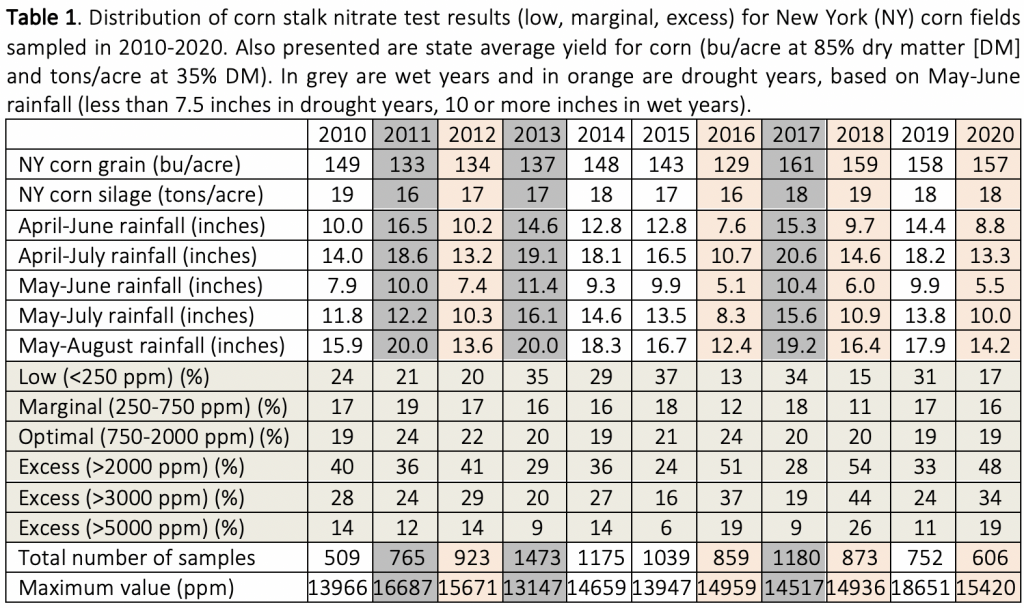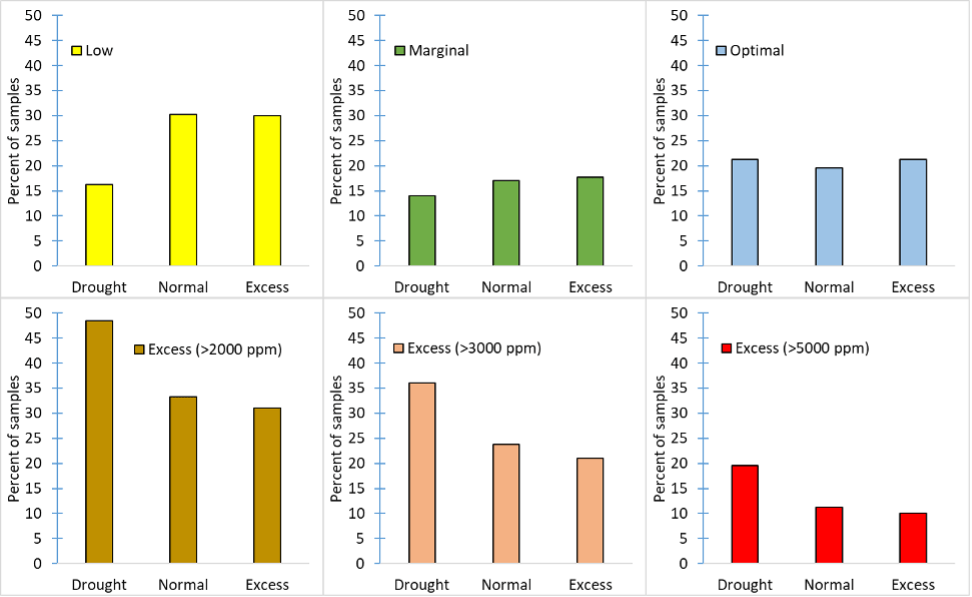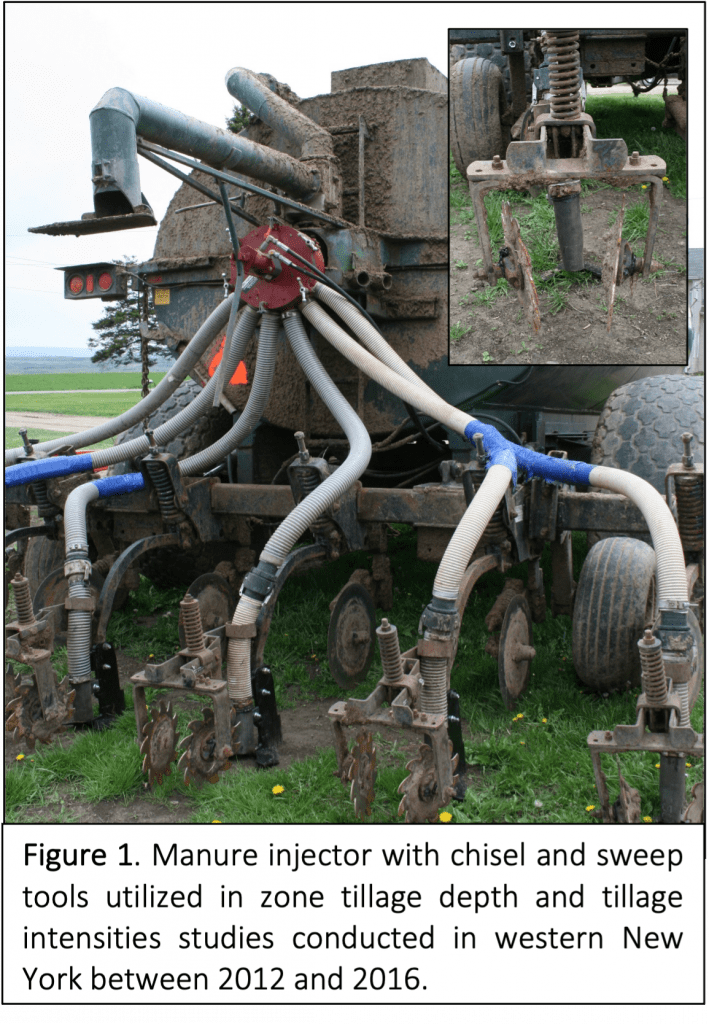Quirine Ketterings1, Sanjay Gami1, Greg Godwin1, Karl Czymmek1,2, and Mike Reuter3
Cornell University Nutrient Management Spear Program1, PRO-DAIRY2, and Dairy One3
Introduction
The corn stalk nitrate test (CSNT) is an end-of-season evaluation tool for N management for corn fields in the 2nd year or more that allows for identification of situations where more N was available during the growing season than the crop needed. Research shows that the crop had more N than needed when CSNT results exceed 2000 pm. Results can vary from year to year but where CSNT values exceed 3000 ppm for two or more years, it is highly likely that N management changes can be made without impacting yield.
Findings 2010-2020
In 2020, 48% of all tested fields had CSNT-N greater than 2000 ppm, while 34% were over 3000 ppm and 19% exceeded 5000 ppm (Table 1). In contrast, 17% of the 2020 samples were low in CSNT-N. The percentage of samples testing excessive in CSNT-N was most correlated with the precipitation in May-June with droughts in those months translating to a greater percentage of fields testing excessive. Because crop and manure management history, soil type and growing conditions all impact CSNT results, conclusions about future N management should take into account the events of the growing season. This includes weed and disease pressure, lack of moisture in the root zone in drought years, lack of oxygen in the root zone due to excessive rain in wet years, and any other stress factor that can impact crop growth and N status.
 Note: Data prior to 2013 reflect corn stalk nitrate test submissions to NMSP only; 2013, 2014, and 2017-2020 data include results from NMSP and Dairy One; 2015-2016 includes samples from NMSP, Dairy One, and CNAL. Yield data are from the USDA – National Agricultural Statistics Service. Rainfall data were from CLIMOD 2 obtained from the Northeast Regional Climate Center.
Note: Data prior to 2013 reflect corn stalk nitrate test submissions to NMSP only; 2013, 2014, and 2017-2020 data include results from NMSP and Dairy One; 2015-2016 includes samples from NMSP, Dairy One, and CNAL. Yield data are from the USDA – National Agricultural Statistics Service. Rainfall data were from CLIMOD 2 obtained from the Northeast Regional Climate Center.
Within-field spatial variability can be considerable in New York, requiring (1) high density sampling (equivalent of 1 stalk per acre at a minimum) for accurate assessment of whole fields, or (2) targeted sampling based on yield zones, elevations, or soil management units. The 2018 expansion of adaptive management options for nutrient management now includes targeted CSNT sampling as a result of findings that targeted sampling generates more meaningful information while reducing the time and labor investment into sampling. Two years of CSNT data are recommended before making any management changes unless CSNT’s exceed 5000 ppm, in which case one year of data is sufficient.

Relevant References
-
- Instructions for CSNT Sampling; Cornell Nutrient Management Spear Program: http://nmsp.cals.cornell.edu/projects/nitrogenforcorn/StalkNtest.pdf.
- Agronomy Factsheets #31: Corn Stalk Nitrate Test (CSNT); #63: Fine-Tuning Nitrogen Management for Corn; and #72: Taking a Corn Stalk Nitrate Test Sample after Corn Silage Harvest. http://nmsp.cals.cornell.edu/guidelines/factsheets.html.
Acknowledgments
 We thank the many farmers and farm consultants that sampled their fields for CSNT. For questions about these results contact Quirine M. Ketterings at 607-255-3061 or qmk2@cornell.edu, and/or visit the Cornell Nutrient Management Spear Program website at: http://nmsp.cals.cornell.edu/.
We thank the many farmers and farm consultants that sampled their fields for CSNT. For questions about these results contact Quirine M. Ketterings at 607-255-3061 or qmk2@cornell.edu, and/or visit the Cornell Nutrient Management Spear Program website at: http://nmsp.cals.cornell.edu/.


![Plant density and pre-sidedress nitrate test (PSNT) at V5, and corn stalk nitrate test (CSNT), silage yield [35% dry matter (DM)], crude protein (CP), and acid and neutral detergent fiber (ADF, NDF).](https://blogs.cornell.edu/whatscroppingup/files/2021/02/Conservation-tillage-Table-1-1024x457.png)